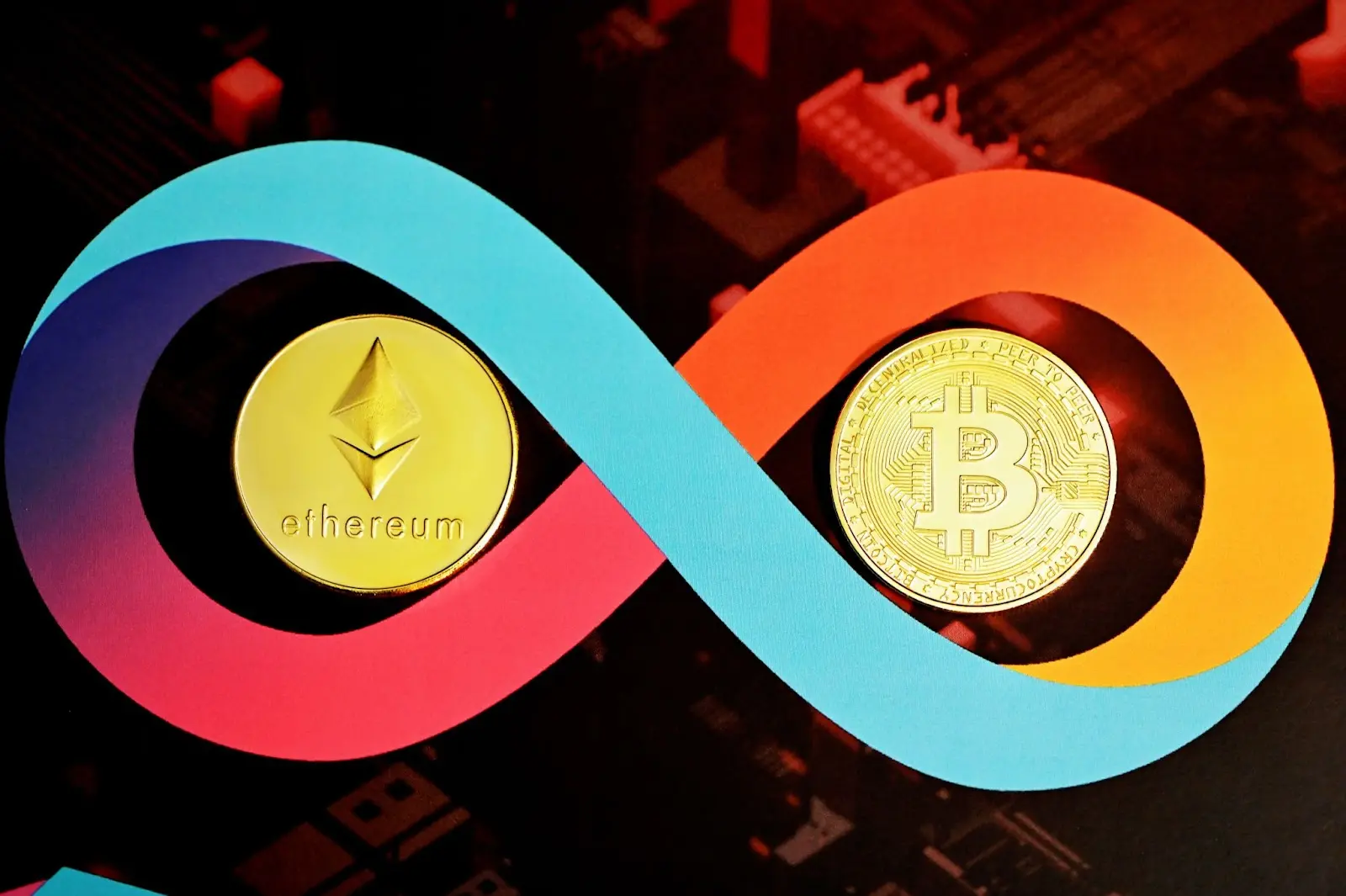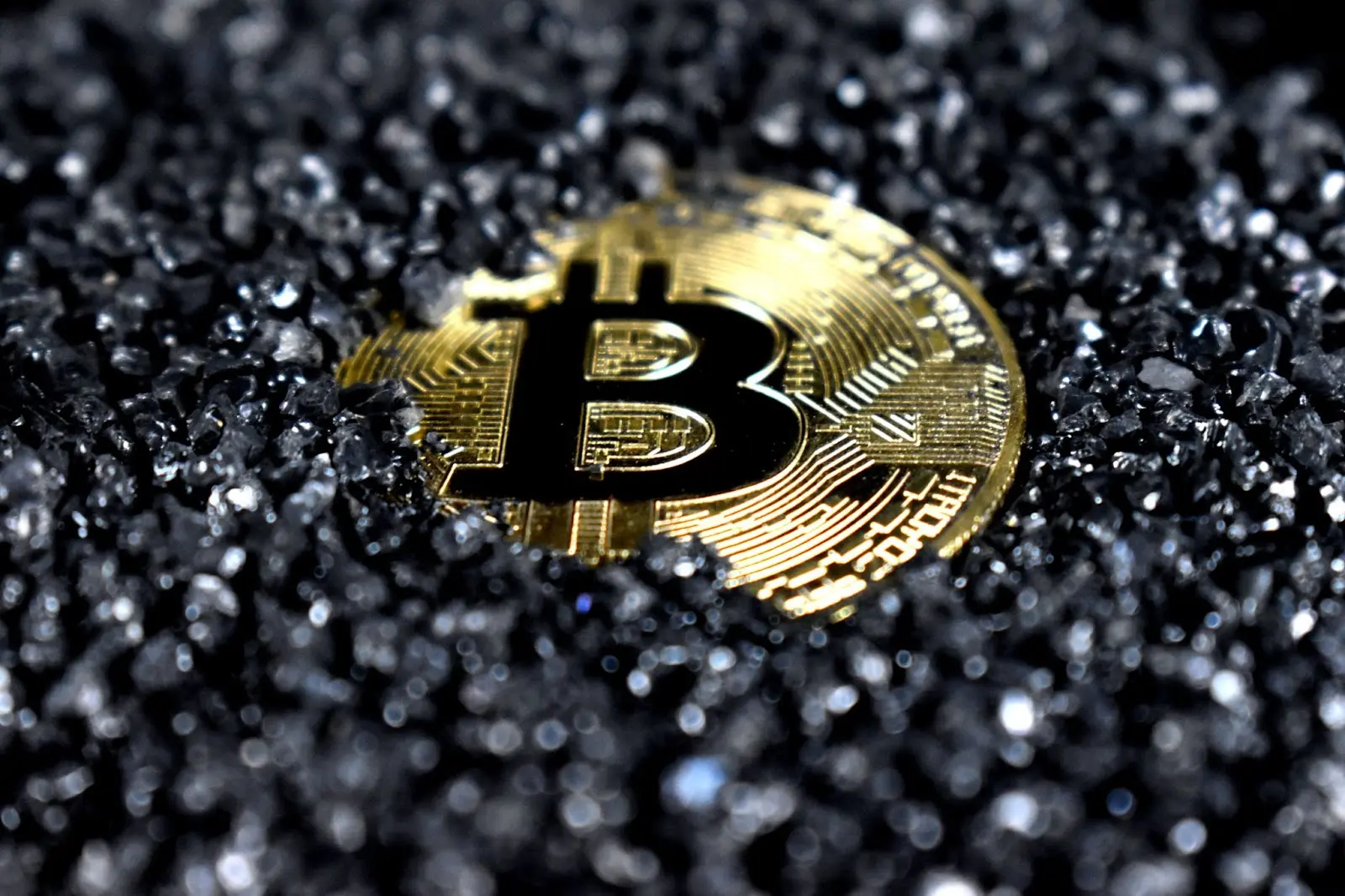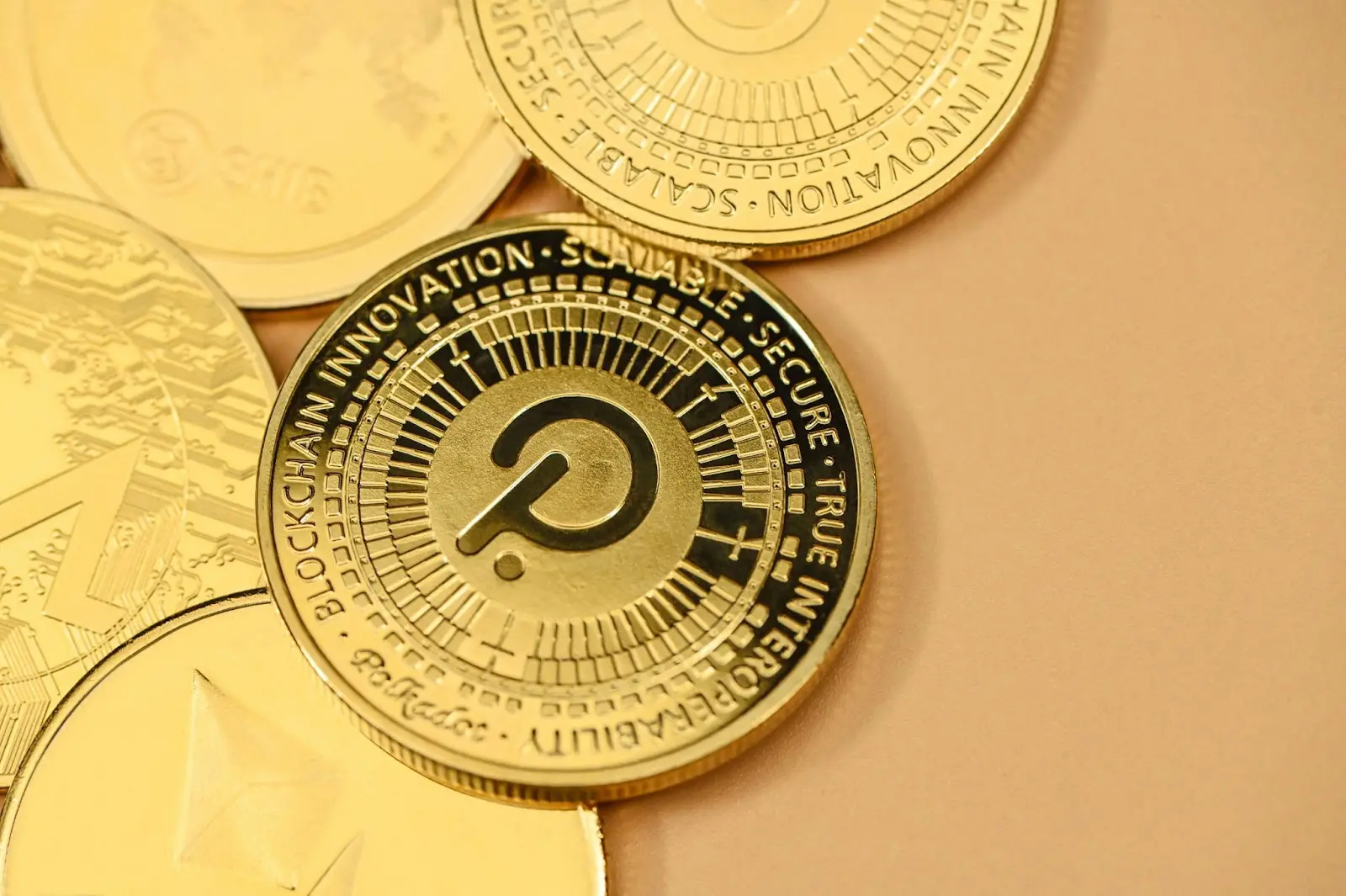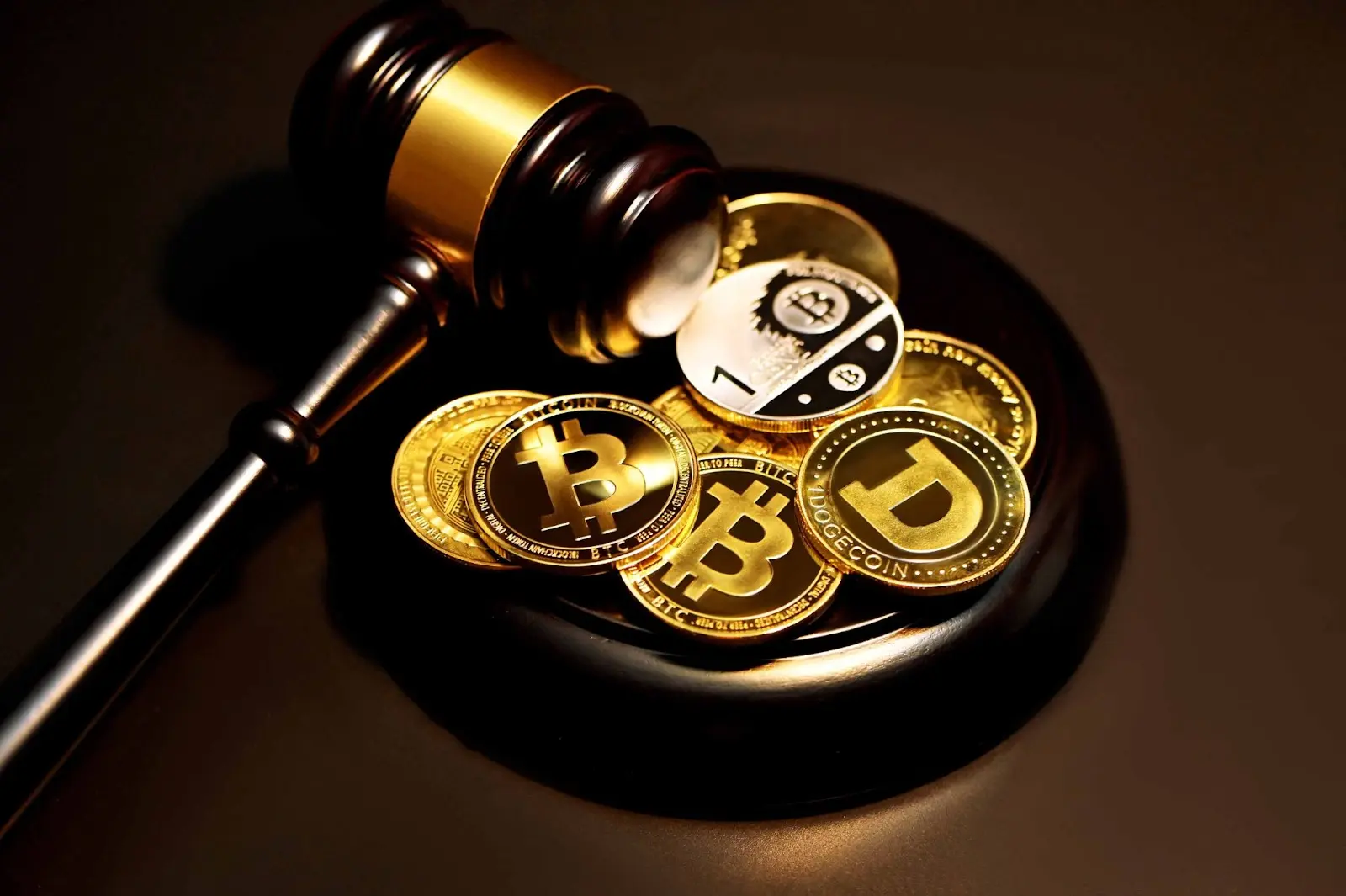Crypto Coin vs. Token: Similarities and Differences

crypto basics
Many people tend to use the terms ‘coins’ and ‘tokens’ interchangeably. However, are they really the two sides of the same coin? Well, not exactly. The time has come to put an end to the ongoing coin vs. token debate and contrast the two.
So, if you were ever wondering why it’s Bitcoin and not Bittoken, USD Coin and not USD Token, NFT (non-fungible token) and not NFC (non-fungible coin), there is a solid reason for that. It’s hidden in the functionality and purpose of a cryptocurrency, as well as how it’s made.
To clear up the confusion and stop the everlasting coin vs. token dilemma, we’ve set out on a mission to draw the distinction between the two.
What Are Coins?
A coin is any cryptocurrency that runs on its own independent blockchain, such as Bitcoin or Ethereum. These coins are typically referred to as native coins.

According to the way they are created, their function, and their value, all coins can be classified into five categories.
- Native coins are the primary currency of the blockchain network they run on. In addition to Bitcoin and Ethereum, these include Litecoin (LTC), Solana (SOL), and Polkadot (DOT). They can be used for various purposes—covering transaction fees, participating in the network, etc.
- Stablecoins are pegged to another asset whose value is not prone to drastic fluctuations, such as fiat currency or precious metals. They were created to reduce volatility. Some of the most well-known ones are USD Coin (USDC) and Binance Coin (BNB).
- Wrapped coins are powered by separate blockchains and stand for new assets but grant users access to cross-chain functionality and liquidity. The most popular one is Wrapped Bitcoin (WBTC).
- Forked coins are derived by splitting or branching off from an existing blockchain network. Some of the most famous include Bitcoin Cash (BHC) and Ethereum Classic (ETC).
- Memecoins were created as a reaction to a meme, trend, or event from a popular culture that was buzzing at the time of their making. As such, they are extremely volatile and prone to drastic price swings. The most popular memecoins are Dogecoin (DOGE) and Shiba Inu (SHIB).
Typically, coins serve as some kind of currency. For instance, Bitcoin is primarily used as a store of value, whereas stablecoins represent a sort of financial instrument you can use to pay for certain goods or services.
What Are Tokens?
Tokens are cryptocurrencies that depend on a specific blockchain to operate. Unlike coins, they don’t have their own blockchain networks but sit on top of others, typically Ethereum or Binance Smart Chain. In the majority of cases, developers use the Ethereum network, mainly due to its smart contract compatibility.
Crypto tokens are created for straightforward purposes: to be employed in a blockchain project or dApp (decentralized app). Alternatively, crypto startups may use tokens to raise capital. This is typically done via an ICO (initial coin offering), during which investors have an opportunity to purchase tokens at very low prices.
Following the launch of the project, the purchased tokens may be used as currency or allow holders to access various features, such as making payments or voting on the protocol changes.
Tokens also allow holders to interact with the services and platform of the blockchain project. It’s the project that determines the precise set of features. In addition, there are tokens that represent tradable goods such as in-game items, certificates, etc.
As opposed to coins, tokens are not mined. Instead, a blockchain developer creates (mints) them and then distributes them. Once a trader gets hold of them, they are free to use them for whatever they want.
Coin vs. Token: Differences Explained
Coin vs. token differences go way beyond the fact that coins have their own blockchain network while tokens sit on the established ones.
Specifically, coins are a better choice for storing value and general transactions. Tokens, on the other hand, are more suitable for creating value, as well as for a number of other specific purposes.
If you check out the cryptocurrency prices, you will notice that coins and tokens have different values. This is due to their primary functions—coins are generally employed as a store of value, whereas tokens power dApps.
Therefore, when the demand for a store of value increases, so will the value of a coin. On the other hand, the value of a token will be shaped by the demands of the fundamental blockchain.
Coin vs. Token: Comparison Chart
Here’s a more detailed view of all the differences between coins and tokens:
It’s good to know that sometimes there isn’t a clear-cut distinction between coins and tokens, particularly when it comes to their usage. These two types of cryptocurrencies don’t exclude each other. What’s more, they often cooperate and complement one another in the crypto ecosystem.
Thus, you can employ coins to purchase tokens or pay fees on coin blockchain networks with tokens. Next, it’s possible to wrap coins into tokens and vice versa, unwrap tokens into coins, and thus gain access to cross-chain functionality and liquidity.
Additionally, crypto holders can stake both tokens and coins to reap rewards or take part in governance processes on the blockchain. Lastly, they can exchange coins with tokens on DEXs or AMMs (automated market makers).
Examples of Coins
The crypto market boasts a whopping 23,000 cryptos. However, according to statistics, August 2023 saw 9,321 cryptocurrencies; the remaining number seems to be either inactive or insignificant.
Out of almost 10,000 cryptos, the following five have made a permanent mark in the crypto space.
#1. Bitcoin
Bitcoin (BTC), the pioneer of the crypto world, was the first digital currency ever created. Made back in 2009 by pseudonymous Satoshi Nakamoto, Bitcoin gained fame owing to its security and decentralized network.

Often referred to as “digital gold,” Bitcoin was originally designed as a medium of exchange to facilitate slow and expensive bank transfers. Nowadays, BTC is seen as a store of value and is one of the favorite assets among crypto investors.
#2. Ethereum
In 2013, Vitalik Buterin created the second-most popular cryptocurrency, Ethereum (ETH). In addition to the greatest altcoin, Ether, the Ethereum network hosts a huge number of tokens on its blockchain.
Owing to its functionalities, this Bitcoin alternative marked a new era of blockchain innovations. The introduction of smart contracts and decentralized apps made Ethereum the backbone of the blockchain revolution.
#3. Solana
Launched in 2017, Solana (SOL) boasts a high-performance blockchain that excels in cost-effective and ultrafast transaction processing. Thanks to the architecture of this blockchain, Solana can handle a high volume of transactions quickly and efficiently.
#4. Cardano
Founded in 2015 by Ethereum co-founder Charles Hoskinson, Cardano (ADA) was the first to adopt the Proof of Stake (PoS) consensus, which earned it the reputation of a green coin. Its native coin, ADA, facilitates peer-to-peer (P2P) transactions.
#5. Dogecoin
Inspired by a cute Shiba Inu meme dog, Dogecoin built a devoted and passionate community thanks to its most prominent advocate, Elon Musk. DOGE, the network’s native coin, is commonly employed for giving tips, donations, and support on different social media platforms.
Coin Features and Benefits
Not all coins are made equal, yet, at the same time, they all share similar features.
The first to begin with is the one we’ve already mentioned—running on their own blockchains. This is of utmost importance, as standalone blockchains allow for designing additional functions and provide unique technical solutions. Plus, it is the chain's efficiency and security that determine the value of a coin.
Besides an independent blockchain, here are some more features coins have in common:
#1. Coins Can Be Mined
The process of issuing new coins is referred to as mining. Now, it has nothing to do with literal mining using pickaxes and similar tools but with the way transactions are validated.
Namely, whenever a user initiates a crypto transaction, network participants called miners need to validate it to prevent double-spending. During the process of validation, new coins are generated and further distributed to miners as a reward for their efforts.
The entire process of mining is essential for securing and validating transactions since there is no centralized authority that will keep an eye on them.
#2. Coins Act as Money
As mediums of exchange, coins can be used to make payments just like regular fiat currencies. More and more businesses and retailers accept crypto coins as a payment option for their goods and services, which significantly facilitates cross-border transactions.

Besides being processed instantly, these transactions come with much lower fees compared to traditional banking and payment methods. Also, you don’t need a banking account or a debit/credit card to make payments in cryptocurrencies. All you need is a crypto wallet and an internet connection.
This way, crypto payments cater to unbanked and underbanked populations, making sure that they have access to basic financial services.
#3. Security and Anonymity
Crypto coins rely on cryptography (after which cryptocurrency got its name) and complex cryptographic techniques to ensure the security, privacy, and anonymity of crypto users.
Owing to blockchain technology and encryption, crypto coins are resistant to hacks. Every holder has their own private key, without which it’s impossible to access crypto. The possibility of hacking a key is non-existent due to the cryptography implemented to generate the key.
Cryptocurrencies spare you from revealing your identity online, which is what many people dread. To make a crypto transaction, you don’t need any proof of identity or anything of the sort. All you need is a 30-character address to which you will receive your coins.
#4. Decentralization
Since coins run on a decentralized blockchain, all transactions are recorded on a public ledger and thus accessible to everyone. Plus, unlike fiat currencies, crypto is not subject to any government law or regulation, which is in direct contrast to the traditional practices of centralized financial systems and institutions.
This way, decentralization helps fight the monopoly of a single currency and grants freedom from money control.
Examples of Tokens
Being mostly distributed via initial coin offerings (ICOs), crypto tokens boomed in the period from 2012 until 2017. At the time, token offerings soared since investors discovered the potential increase in value. This further drove the creation of extra tokens.
At the time, some of the most popular tokens were launched, including the following ones:
#1. Tether
Tether (USDT) is among the most widely recognized tokens in the crypto realm. This stablecoin was created in 2014 to respond to the high volatility of Bitcoin and Ethereum by pegging its value to USD. Thus, for every USDT in circulation, there should be the same amount of USD held in reserve.
This long-awaited stability makes Tether a popular choice among traders and investors who want to hedge against market volatility while taking advantage of cryptocurrencies.
#2. USD Coin
Just like USDT, USD Coin (USDC) is a smart contract-based token backed by USD on a 1:1 basis. This makes sure that there is an equivalent amount of USD in the reserve for every USDC issued.
Launched in 2018, USDC gained popularity owing to its transparency and regulatory compliance. The token is widely implemented in the DeFi (decentralized finance) world and serves as a bridge between traditional finance and blockchain-based apps.
#3. Polkadot
Running on the Polkadot network, the DOT token was created in order to facilitate interoperability among various blockchains. The Polkadot ecosystem enables different blockchains to communicate and work together, opening the door to a new era of cross-chain applications and decentralized services.
DOT owners can take part in network governance and contribute to the evolution of the Polkadot ecosystem.

#4. Chainlink
Chainlink (LINK) has an important role in the realm of smart contracts and dApps. Its primary function is to provide secure and reliable data, i.e., oracles, to smart contracts.
Owing to the way it connects blockchain-based smart contracts with real-world data sources, Chainlink allows for a vast array of use cases—from DeFi to supply chain management. Such versatility made LINK a favorite choice among blockchain developers who seek to advance the capacity of their dApps.
#5. Shiba Inu
Named after the playful dog breed, Shiba Inu (SHIB) is a direct competitor to Dogecoin (DOGE). This second-greatest memecoin is an Ethereum-based token that was created as an experiment but quickly rose to fame, demonstrating the idea that everyone can participate in the crypto space.
Though it started out as mere fun, Shiba Inu grew into a unique ecosystem that includes SHIB and its sister tokens, LEASH and BONE, as well as the passionate community called Shib Army.
Token Features and Benefits
Without a doubt, crypto tokens have emerged as one of the most essential innovations in today’s fintech industry. They have great potential to make the whole fintech market frictionless, thus reaping numerous benefits.
Tokens stand for a specific asset on a blockchain. By tokenizing assets, i.e., creating a token that will represent a digital or physical asset on a blockchain, users can buy or sell any asset effortlessly without unnecessary middlemen.
This way, the tokenization of assets creates a seamless and frictionless market, eliminating multiple barriers from the system.
Crypto tokens have a high potential to revolutionize payments. Even though they typically don’t function as a store of value, they still have certain intrinsic value. As such, they can be traded, exchanged, and used as a payment method.
Additionally, due to the fact that tokens don’t require creating a new blockchain network, they are extremely valuable in the decentralized world. Thus, they allow Web3 startups to focus on their primary idea and engage in the project rather than dealing with the complexities of building a brand-new blockchain network.
What Are Token Standards?
Token standards represent a fundamental framework for creating new tokens within a blockchain ecosystem. Different blockchains have their own token standards that define token features and smart contracts.
Though tokens can be built upon any blockchain, developers typically build them on top of the Ethereum blockchain. Some of the most frequently used ones include.
- ERC-20 is the most typical standard for fungible tokens and is commonly implemented for issuing governance tokens, payment tokens, staking, etc.
- ERC-721 is the standard used for non-fungible tokens (NFTs), which cannot be exchanged for other tokens of the same sort. As such, they are ideal for creating digital art, game items, collectibles, etc.
- ERC-1155 is a token standard that encompasses various token types: fungible, non-fungible, and semi-fungible, along with other configurations. This standard is more efficient than its ERC-20 and ERC-721 counterparts, as it allows for creating one smart contract for both fungible and non-fungible tokens.
Types of Tokens
Crypto tokens serve different purposes—they may be used for raising funds or allowing access or rights to specific services. Based on their use case, value proposition, or function, they can be categorized into several groups:
#1. Utility Tokens
Utility tokens give access to particular services or functions on a blockchain app or specific services on the blockchain project. They are typically issued during an ICO.
Some of these tokens may offer rewards, discounts, or other extra benefits to their holders. In general, utility tokens bear no prospect of profit; otherwise, they stand for a blend of utility and security tokens.
Some examples of utility tokens include Chainlink (LINK), Uniswap (UNI), and Sandbox (SAND).
#2. Security Tokens
Security tokens stand for a share of ownership or claim on an asset or stream of income. You can think of these tokens as digital representatives of traditional assets (stocks, bonds, ETFs, etc.), as well as real estate investment trusts (REITs), as they can track the actual value of equities.

As these tokens are employed for price speculation, they are subject to regulations and compliance. Some of the most widespread are Polymath (POLY), tZERO (t0), and Securitize.
#3. Equity Tokens
Equity tokens are a subset of security tokens. They represent equity in an underlying asset, commonly the stock of a company. They function similarly to stocks and offer ownership to their owners. Token holders have their share in the company and can vote on its decisions.
These tokens are issued via the ETO (equity token offering) process and are subject to the security laws of the country in which they are issued.
Some examples of equity tokens are Enegra (EGX), BFToken, Neufund, and RRT Token.
#4. Governance Tokens
Governance tokens allow their holders to vote in the governance of the network, i.e., to say yes or no to major proposals for a particular dApp.
Anyone who owns governance tokens can participate in the voting processes and stake their tokens to decide on the direction of the project. Commonly, one token equals one vote; therefore, the more tokens you have, the stronger your vote will be.
The most well-known governance tokens include Maker (MKR), Compound (COMP), and Aave (AAVE).
#5. Payment Tokens
Payment tokens are intended to be used solely as a means of payment, just like centralized currencies. As opposed to utility tokens, they don’t interact with any blockchain-based apps.
Yet, be careful not to confuse payment tokens with fiat currencies. Unlike traditional money, payment tokens are not regulated yet.
The first association with payment tokens is Tether (USDT), making it one of the most widespread representatives of this token type.
#5. Non-Fungible Tokens
Non-fungible tokens, or NFTs, are immutable and unique virtual assets that stand for some forms of digital media.
NFTs are commonly associated with art and collectibles, the most popular being Bored Apes and CryptoPunks. They have numerous potential applications in gaming, the metaverse, digital albums, and virtual tickets.
#6. Play-to-Earn Game Tokens
Numerous blockchain-based games use play-to-earn tokens to reward players. They can further implement these tokens to buy digital items, upgrade their characters, or gain access to VIP experiences. Alternatively, players can exchange these tokens for other cryptocurrencies or sell them.
Crypto Coins vs. Tokens vs. Traditional Finance

When it comes to finance and fintech, the point of blockchain technology is to make the idea of “being your own bank” a tangible reality. Today, mainly thanks to the emergence of tokens, cryptocurrencies aren’t the sole store or transfer of value. They can also act as financial instruments, like derivatives and representations of real-world assets.
The key difference between traditional and decentralized finance, to which these assets belong, lies in the notion of ownership.
In traditional finance, banks or other financial institutions don’t give you full ownership of assets, i.e., money you have in your bank account. In DeFi, you retain full ownership over your assets. In other words, you have full custody over your coins and tokens, so no one can manage them but you. Plus, they are never at risk as long as you keep your keys safe and secure.
Another striking distinction is accessibility. Decentralized finance is built on blockchain technology. As such, it’s open-source and accessible to everyone who has access to an internet connection, regardless of their place of residence.
Unlike in traditional finance, all transactions in DeFi are transparent and immutable. Everything is recorded on a public blockchain and cannot be altered. This way, transactions are irreversible and tamper-proof.
Traditional finance, on the other hand, has a well-established infrastructure that can provide a high level of both reliability and stability. Plus, it operates under a solid legal framework, so it can offer protection when necessary.
Last but not least, traditional finance has institutions and protocols that can detect and prevent fraud, thus offering an extra level of security for consumers. This, unfortunately, isn’t the case with decentralized finance.
Key Takeaways
Ever since cryptocurrency and blockchain gained popularity, people have been confusing coins with tokens and vice versa. While it’s not quite possible to draw a clear line between the two and immediately resolve the coin vs. token dilemma, as they don’t necessarily exclude each other, there is still an unambiguous difference between them.
Coins are powered by their own blockchain and are used mainly as a store of value and for transfers. Tokens, on the other hand, don’t have their own blockchain; instead, they run on top of the existing ones. Depending on their type, tokens can serve different purposes and can be used as a payment method, to vote on specific protocols, as collectibles, etc.
So, the answer to the everlasting coin vs. token question of which is better to invest in isn’t that straightforward.
If you’re a short-term trader, the higher volatility typical of tokens might suit your trading style better. In contrast, if you’re a long-term investor, coins may be a more adequate choice since they are less volatile than tokens.
Whichever the case is, make sure that you do your due diligence before setting out on an investment journey.